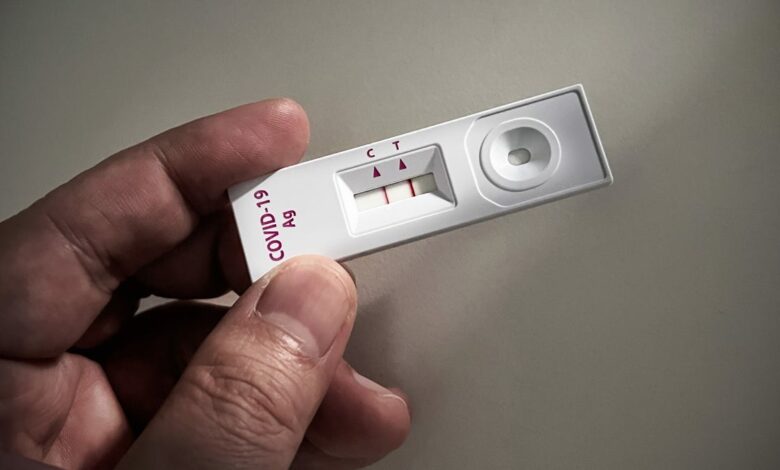Summer’s COVID Surge: What to Know About the CDC’s Current Guidelines

Summer 2024 is still under a COVID bubble, with rising case numbers reflected in relatively high wastewater data. More specifically, the “K” subvariants, including K.3 and K.3.1.1 (still descendants of omicron) make up the majority of current cases.
While COVID is still spreading among us and the basic advice about what to do if you feel sick hasn’t changed, some guidelines have changed since the virus was at its peak and was considered a public health emergency. Here’s what the CDC says to do if you’re sick and when we can expect a new vaccine. Plus, learn more about where you can still get a free COVID test.
Do I have to isolate if I test positive for COVID?
The CDC’s new guidelines focus on what to do if you have symptoms or feel sick, rather than on your COVID test results.
Because treatment depends on which virus you have, it is recommended that you get tested and seek medical care if you are at higher risk for any respiratory virus, including complications from COVID, influenza, or RSV.
If you are an adult aged 50 or over, or if you have a chronic condition such as heart disease, high blood pressure, asthma, diabetes or something else, You may be eligible for an antiviral medication (including Paxlovid) that reduces the severity of the illness and lowers your risk of hospitalization. You can get it by calling your regular doctor or pharmacist or by finding a Test to Treat centerwhere people with Medicare, Medicaid, people who are uninsured, and people with VA insurance or who receive Indian Health Services can get free COVID-19 testing and treatment. It is important that you get the antiviral within the first few days of symptoms to make the medicine work.
For anyone who has COVID, or suspects they may have it, the CDC recommends following general guidelines for preventing the spread of respiratory viruses if you are sick. This includes stay home and stay away from others when you feel sick, regardless of whether you get tested.
You can “return to your normal activities,” the CDC says, as long as it has been 24 hours since your symptoms generally improved and as long as it has been 24 hours since you had a fever (and you haven’t taken fever-reducing medications, such as ibuprofen, to bring it down). Then, take extra precautions for five days after You are improving, which may mean wearing a mask or not being near people who are at higher risk for serious illness from COVID or other respiratory infections.
This is a departure from pandemic-era guidelines that were more specific about when and how long you should isolate after exposure to COVID-19 or a positive test result, rather than symptoms. But it follows the same general principle for infectious diseases: Stay home if you feel sick or have symptoms that could indicate COVID, regardless of whether you test positive, to avoid spreading the virus to someone who might actually get sick.
When will the next COVID vaccine be available?
Over the past year or so, COVID vaccines have gone the way of annual flu shots, with the formulas updated each year to target whatever strain of the virus is circulating. A new vaccine targeting a newer COVID lineage is expected to roll out this fall, according to information from the US Food and Drug Administration.
In the meantime, you can make sure that you: up to date on your COVID boosters or vaccines, with guidelines varying based on age and whether you are immunocompromised. If you are unsure whether you need a shot at this time, talk to your doctor or pharmacist. The cost of COVID vaccines is no longer covered by the federal government. The Bridge Access Program is offering COVID vaccines at no cost to people without health insurance, although it scheduled to end in August 2024.




